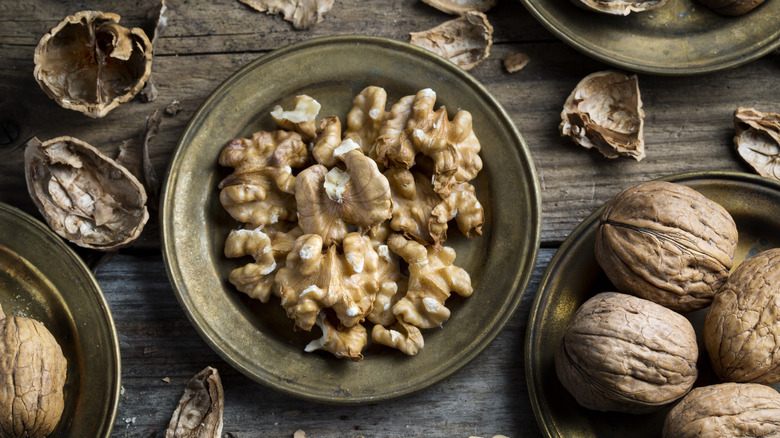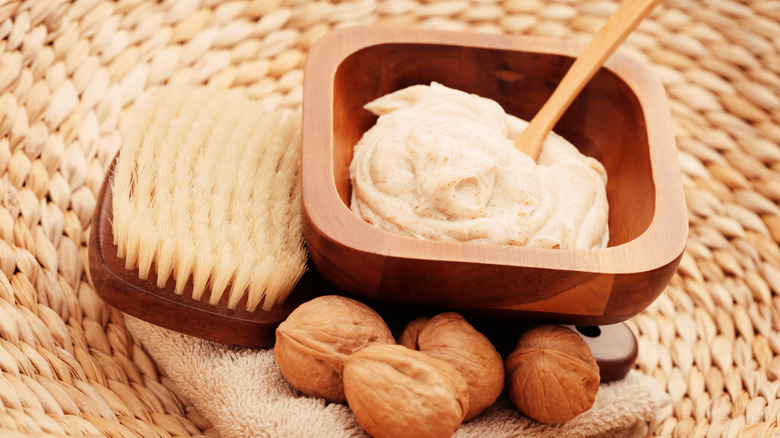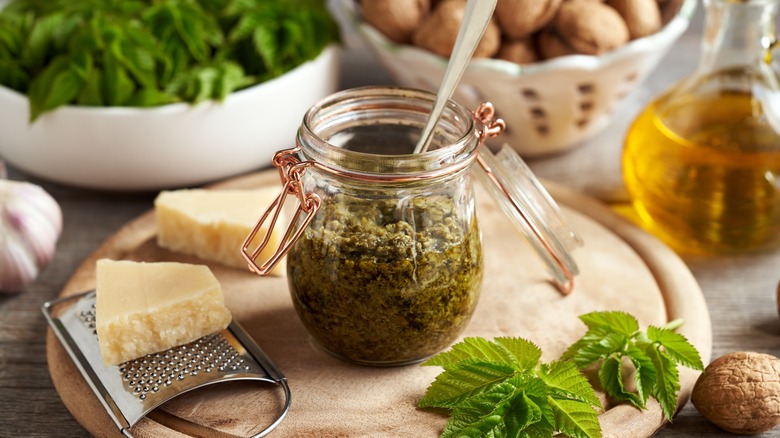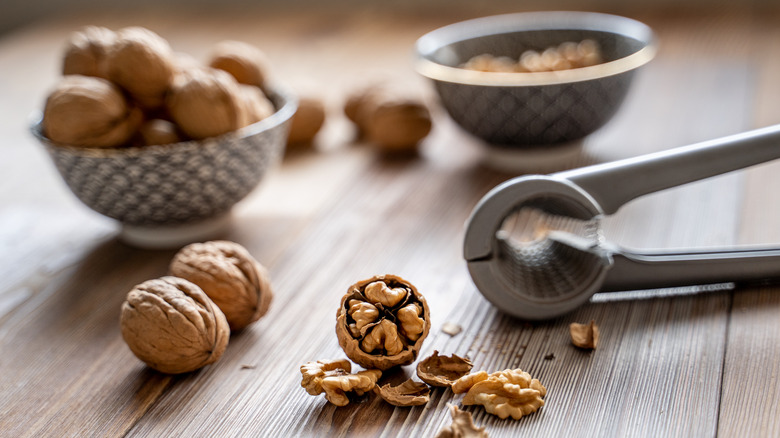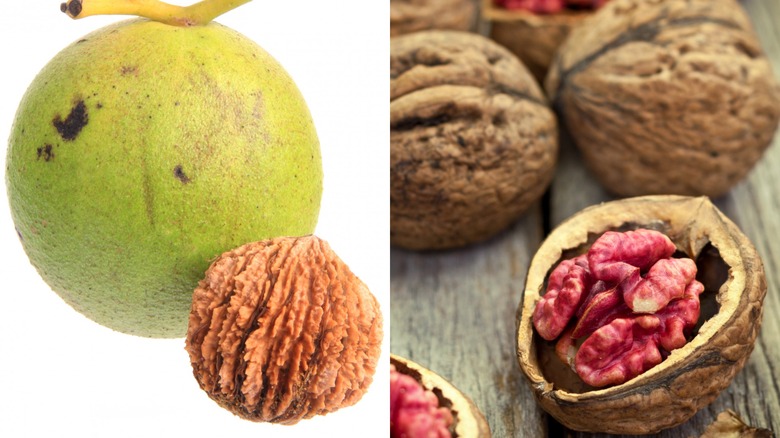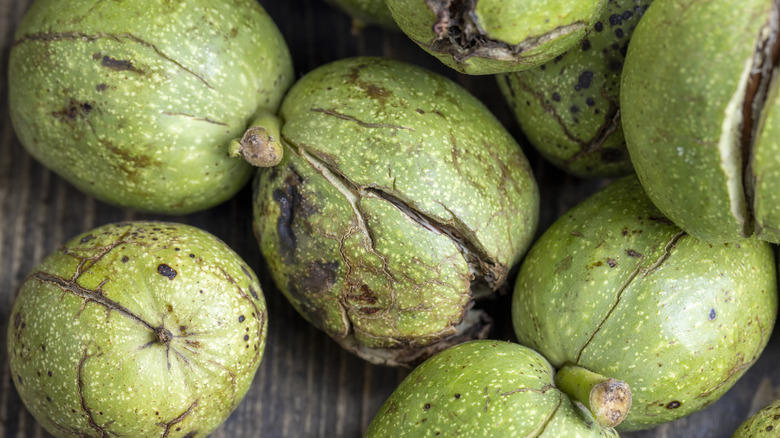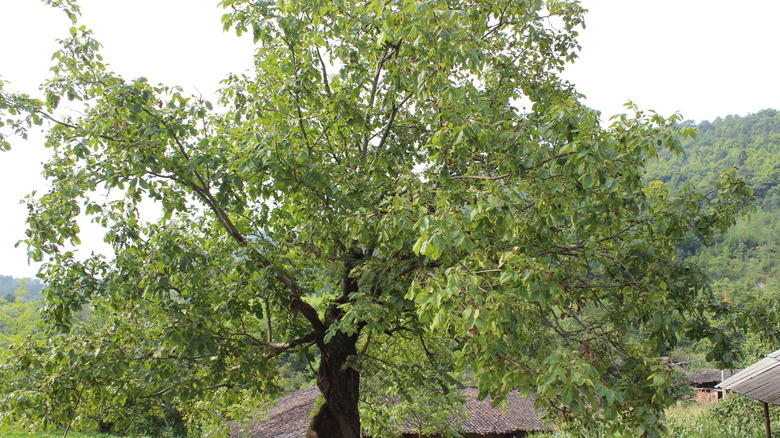Popular Walnut Myths Debunked
Walnuts seem straightforward, yet there are plenty of myths surrounding these tree nuts. That's understandable since they are one of the oldest documented tree foods eaten by humans. There are mentions of the fruit in Persia as early as 7,000 BC, or around 9,000 years ago! Throughout the millennia, it's natural that people would come up with something false to say about the nut.
The delicious treats have long suffered from consumer misperceptions and misuse. All this time, you may have been storing your walnuts incorrectly, and as a result, eating subpar nuts. Maybe removing the shell has been a problem in your household. Perhaps you didn't realize the range of recipes you could use them in or that there are several varieties. You could even be mistaken about where they come from. Hint: It's not as far away as you might think.
Read on to learn more about one of humanity's favorite nuts. Just like you have to crack the shell to get to the treat inside, you can crack through these nutty lies to uncover the truth.
Myth: Walnuts are only for eating
If you think walnuts are only meant for snacking, you've fallen victim to this myth. Every part is useful — nut, shell, and husk — and not just for filling your tummy. You can use walnuts from your trail mix to hide light scratches on wooden furniture and floors. Rub them over the mark and the exposed light-colored wood will soak up the natural oil and turn darker. The damage will become imperceptible after buffing the area with a cloth.
Wood isn't the only surface people clean with walnuts. Spas add ground-up walnut shells to exfoliating mixes as the rough texture scrapes away dead skin cells. Buy pre-ground walnut shells from a beauty supply company to try it yourself, or prepare your own using an old coffee grinder. Art restorers also turn to this abrasive to clear the muck from the surface of bronze statues and return them to their former glory. Likewise, stone polishers add shells to their tumblers, because they're cheap, biodegradable, and rarely leave scratches.
Finally, simmering walnut husks — the green exterior — creates an attractive brown dye. It naturally contains a chemical called juglone which binds the color to fibers, so no additives are necessary. To test it out yourself, you'll need to get your walnuts straight from the source, since packaged nuts don't come in the husk.
Myth: Walnuts are only used for baking sweets
Google what to do with walnuts and you'll probably find recipes for brownies, banana bread, baklava, and candied nuts. They taste delicious in each of those treats, but if you think walnuts are only for dessert, you've fallen prey to a myth. The truth is this ingredient is fundamental to many savory dishes as well. You only need to try a walnut salad with apples, cranberries, arugula, and feta cheese to see how well they pair.
Romans were early to employ walnuts in their cooking. Since then, this ingredient has had a special place in the regional cuisine. Today, Italians use walnuts in sweet and savory dishes, such as in Umbrian sourdough bread which is flavored with hard cheese and walnuts. Gorgonzola and nut sauce is a popular dressing for steak, and pesto is another likely place to find walnuts as a substitute for pine nuts used in the original recipe.
Then, if you travel a couple of thousand miles from Umbria to Syria, you can try muhammara. This is a dip or sauce made with roasted red bell peppers, walnuts, and spicy Aleppo pepper flakes, that pairs well with pita bread. The ratio is about one part chopped walnuts to two parts red pepper, making this nut a fundamental source of flavor and texture.
Myth: You should store walnuts in a cupboard
When you pick up a bag of shelled walnuts at the grocery store, you'll find it sitting on a shelf outside of the refrigerated section. That might lead you to store them in your pantry, but you'd be making a mistake. Walnuts quickly deteriorate in quality and can get rancid at room temperature. The high oil content of walnuts means they go bad quickly when exposed to warm temperatures. You may notice they've gotten rubbery, shriveled, or have an aroma similar to paint thinner. If you notice any of these signs, throw them out and buy a fresh bag because they've gone rancid.
To store your walnuts in optimal condition, keep them in an airtight container. Since they absorb odors easily, keep them away from strong-smelling foods like onions, garlic, or cinnamon. They'll last up to three months in the fridge and as long as a year in the freezer. If you can get them directly from the grower in the fall, even better — you'll know they're fresh.
For maximum freshness, buy whole walnuts and leave them in the shell until you want to eat them. Ultimately there is a compromise between quality and ease. Shelling is time-consuming and it's much easier to scoop chopped walnuts into brownie batter than worry about cracking open a dozen and chopping them before even getting started.
Myth: English walnuts come from England
It's easy to imagine a Jane Austen character strolling around the countryside in the autumn with a basket on her arm, plucking walnuts from overhanging trees while arguing with a love interest. As quaint an image as it is, Jane Austen didn't write about walnuts in any meaningful way, and the crop never grew commercially in England.
English walnuts didn't originate in the country for which they were named, either. More appropriately, they are sometimes called Persian walnuts, which is closer to the truth since the tree fruit likely developed in Central Asia. Dishes from that region continue to feature this ingredient – just think about baklava. Eventually, travelers carried walnuts to Europe, East Asia, and the rest of the world.
Some people believe that English merchants widely traded these nuts and that's why they carry the name today. Others have said designating this ingredient as English was a simple way for colonists to distinguish between the American black walnut and the walnut used by European cooks.
Today, calling them Californian walnuts might be more apt. The USDA Foreign Agricultural Service reports that Californian farmers harvest and sell around one billion pounds of walnuts each year. The state exports 40% of those nuts to the rest of the world, and the remainder makes up 99% of the nuts consumed in the U.S.
Myth: You have to use a nutcracker to open a walnut
Nutcrackers make it easier to open walnuts, but there are other methods, too. People with strong hands can shell nuts without tools — try it yourself. Put two in one hand and line up the seams against each other, with the pointy ends of the walnuts toward your thumb. Wrap the opposite hand around the first and squeeze — the weaker nut will crack. Alternatively, put a single walnut between your forefinger and thumb with the principal seams touching your fingers and the rounded side up. Add pressure with your opposite hand while slowly rotating the walnut back and forth.
If that's too hard, get a knife with a pointed tip and stick the point into the rounded end where the seams come together. Use the knife as a lever and the slight pressure will pop the walnut into two perfect halves. This may even work better than a nutcracker.
Some people develop complex techniques to remove whole, unscathed walnuts from the shell. One YouTuber started by identifying two weak spots on the rounded side of the shell next to the intersection of the seams. They tapped the nut with a framing hammer about half an inch from the intersection on both sides, along the secondary seam. Once the walnut cracked, they used needle-nose pliers to remove a piece of the shell and let the whole walnut tumble out.
Myth: Walnuts are fatty, so you shouldn't eat many
Walnuts are fatty, containing 65.2 grams of fat per 100 grams. That means more than half of their weight comes from oil. With that in mind, they might not sound so healthy, but scientists have discovered a range of benefits walnuts provide, so don't let the nutrition facts fool you.
In 2021, the American Health Association published results in the journal Circulation, demonstrating that walnuts keep your heart healthy and cholesterol down. In the study, researchers divided 700 healthy older adults into two groups. One group added half a cup of walnuts to their daily diet, while the second group changed nothing. After two years, the walnut-eating group lowered their LDL cholesterol level by 7.9% for men and 2.6% for women, without any associated weight gain. Some researchers hypothesize that the effect could be more pronounced for people with high cholesterol.
The fiber and protein content in walnuts makes them filling, which may prevent people from overeating after snacking on a handful. People on weight-loss diets probably shouldn't worry about adding this delicious food to their regimen and may even reap some additional benefits. For example, walnuts might counter diabetes by reducing inflammation and in turn blood sugar. Lower inflammation can prevent blood clots and assist in healthy heart and brain function. Walnuts likely promote healthy gut bacteria too, reducing the probability of developing colon cancer.
Myth: Walnuts have similar health benefits to other nuts
Perhaps you've heard walnuts are healthy but assume you'll get the same benefits from hazelnuts or almonds. Sure, other nuts are a part of a healthy diet, but walnuts stand out among the crowd. These nuts contain iron, zinc, copper, selenium, vitamin C, and niacin, but that's not all.
In 2011, chemistry Professor Joe Vinson of the University of Scranton published a study about nuts, assessing nine types for their chemical makeup. His results revealed that walnuts contained nearly twice the amount of antioxidants, including compounds that improve brain function and memory. They can reduce inflammation and the number of free radicals floating around, earning themselves a reputation as a brain food.
Walnuts also contain a significant amount of omega-3 fatty acids, which benefit heart health and lower the risk of strokes (per The Cleveland Clinic). Other foods high in omega-3s include ground flaxseed, some types of fish, and edamame, but no other nuts come close to offering the same amount as walnuts.
Myth: There's only one type of walnut
When you buy them in the grocery store, the packet usually just says walnuts. That could lead you to believe that there's only one kind, but believe it or not, there are a number of varieties. English or Persian walnuts and black walnuts are both quite common.
The first kind has smooth shells that pop out of their husks easily. They grow in Californian orchards, and you'll find them at most supermarkets. Agricultural engineers are always working to develop new varieties of English walnuts with earlier harvest dates and heavier inner kernels. Currently, the most common is called Chandler and is probably what you purchase in a pound bag. Their kernels are large, light-colored, and mild-tasting. If you look around, you might find something better, though. For example, Robert Livermore walnuts are bright red, while Eureka walnuts are darker and more flavorful.
Black walnuts, on the other hand, grow wild across North America and have not been commercialized on a large scale, probably because they require far more work to remove from their husks. Some people put them in garbage cans with water and then use an electric paint stirrer to remove the hull. Once removed, the inner shell is unearthed, bumpy and rugged. Black walnuts are also harder to crack — you'll need a hard surface and hammer to get to the center.
Myth: Walnuts are nuts
It seems obvious that walnuts are nuts — the word nut is even in the name — but from a botanical perspective, this food is a fruit. The difference between a nut and a fruit comes from the way they grow. Nuts develop as a single seed within a hard woody shell, with no additional flesh covering on the outside. Acorns, chestnuts, and hazelnuts are all true nuts.
Walnuts develop differently, though. They are the pit at the center of a green-fleshed fruit and contain a single seed. All fruits that grow this way are considered drupes. Peaches, cherries, olives, mangoes, and almonds belong in the same category. Sometimes the edible part of drupes is the outer flesh, but other times, like in the case of walnuts, it's the seed. Of course, unless you're a botanist, you can keep referring to walnuts as nuts. Nutritionally and culturally they fit into this category.
In the fall, the fleshy part of an English walnut (the husk) dries and splits open to reveal the pit. That means it's ready for harvest. It is relatively easy to remove the pits from the fruit. Black walnuts are a different story though, and the fleshy part of the fruit clings to the spikey pit inside. To make matters worse, this fruit contains substances that will stain your hands and irritate your skin — you'll want to wear gloves.
Myth: People who fall asleep under a walnut tree will go mad
Despite providing a delicacy, walnut trees have a reputation. One myth says that napping under the tree will cause madness or, in the worst case, eternal slumber. However, no one on record has ever died from taking a rest in its shade. If it's a blustery autumn afternoon, you might be at risk of having a fruit fall on your head, though. Another story tells of the infamous Benevento Walnut tree in Italy, which people said was the gathering place for all the witches in Europe. A bishop supposedly uprooted it in the 7th century as a way to suppress non-Christian religions in the region.
Whether people say the walnut tree attracts madness, death, or witches, it sounds pretty sinister for a plant that provides a particularly nutritious fruit. The origin of these myths may be linked to juglone, a toxin found in walnut wood and in the fruit. This poisonous substance affects other plants growing under walnut trees. Leaves turn discolored and plants stop growing. Animals can also be sensitive to juglone and humans may get a rash from it. Perhaps the people who created these myths noticed the bare circle below the trees and the fact that animals avoided sitting under their canopies. From there, it wasn't much of a leap to assume the plants could cause madness, death, or be the site of witchcraft.
